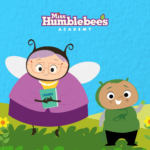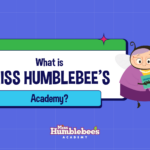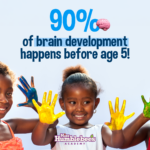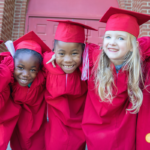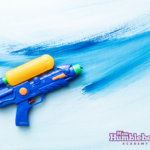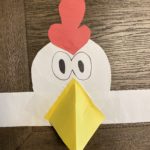Physical activity is essential for preschoolers, not just for their physical health but also for their cognitive, emotional, and social development. At this age, children are naturally active and curious, making it the perfect time to encourage movement and build healthy habits that will last a lifetime. Incorporating fun and engaging physical activities into your child’s daily routine can help them develop important skills while also fostering a love for staying active.
At Miss Humblebee’s Academy, we understand the importance of movement in early childhood development. That’s why we offer Bee Fit videos, designed to help preschoolers stay active while meeting critical developmental milestones. These videos combine fitness with fun, making it easy for parents and caregivers to incorporate movement into their child’s day.
In this article, we’ll explore how movement supports overall development, share fun fitness ideas, and highlight how Miss Humblebee’s Academy’s Bee Fit videos can support your child’s growth.
How Physical Activity Supports Development
Movement plays a critical role in a preschooler’s overall development. Here’s how physical activity benefits different areas of growth:
1. Physical Development
- Gross Motor Skills: Activities like running, jumping, and climbing help strengthen large muscle groups and improve coordination, balance, and agility.
- Fine Motor Skills: Movement-based activities, such as throwing a ball or playing with small objects, refine hand-eye coordination and dexterity.
- Bone and Muscle Strength: Regular physical activity supports healthy growth by strengthening bones and muscles, which is especially important during these formative years.
2. Cognitive Development
- Brain-Body Connection: Physical activity stimulates brain development by creating new neural connections. Activities that involve coordination, like hopping or skipping, enhance cognitive skills such as focus, memory, and problem-solving.
- Learning Through Movement: Movement-based learning, such as counting while jumping or identifying colors during a scavenger hunt, reinforces academic concepts in a fun and engaging way.
3. Emotional and Social Development
- Stress Relief: Physical activity helps children release energy and manage emotions, reducing stress and promoting relaxation.
- Confidence Building: Mastering new physical skills, like riding a bike or climbing a playground structure, boosts self-esteem and encourages perseverance.
- Social Skills: Group activities, such as playing tag or participating in a dance class, teach children teamwork, communication, and cooperation.
For more on how physical activity supports emotional and social growth, check out our post, “How to Support Your Child’s Emotional Development”.
Bee Fit Videos: Fitness Made Fun
Miss Humblebee’s Academy’s Bee Fit videos are specifically designed to help preschoolers stay active while meeting critical developmental milestones. These videos combine movement, music, and fun activities to engage children and encourage healthy habits.
What Makes Bee Fit Videos Special?
- Developmentally Appropriate: Each video is tailored to the needs of preschoolers, focusing on activities that support gross motor skills, coordination, and balance.
- Thematic and Engaging: Bee Fit videos incorporate fun themes, such as animals, seasons, or imaginative play, to keep children excited and motivated.
- Easy to Follow: The videos are simple enough for children to follow along independently or with a caregiver, making them a great addition to any daily routine.
- Integrated Learning: Many Bee Fit videos combine movement with learning, such as counting, identifying shapes, or exploring new vocabulary.
For more on how Miss Humblebee’s Academy integrates movement into learning, visit our post, “The Role of Music in Early Childhood Development”, which highlights how music and movement go hand in hand.
Fun Fitness Ideas for Preschoolers
In addition to Bee Fit videos, here are some other fun and simple fitness ideas to keep your preschooler active:
1. Outdoor Adventures
- Nature Walks: Take a walk in the park or around your neighborhood. Encourage your child to observe their surroundings, collect leaves, or look for animals.
- Obstacle Courses: Set up a backyard obstacle course using household items like cones, hula hoops, and jump ropes. Challenge your child to crawl, jump, and balance their way through.
- Bike or Scooter Rides: Riding a bike or scooter is a great way to build strength and coordination while enjoying the outdoors.
2. Indoor Activities
- Dance Parties: Turn on some music and let your child dance freely. Dancing improves coordination, rhythm, and balance while providing a fun way to burn energy.
- Yoga for Kids: Simple yoga poses, like downward dog or tree pose, help improve flexibility, balance, and focus. Miss Humblebee’s Academy offers guided movement activities that incorporate yoga and mindfulness.
- Ball Games: Play catch, roll a ball back and forth, or set up a mini bowling game using plastic bottles.
3. Group Games
- Tag: A classic game of tag encourages running, dodging, and quick decision-making.
- Simon Says: This game helps children practice listening skills and follow directions while moving their bodies.
- Parachute Play: If you have access to a parachute or large sheet, gather a group of children to lift, shake, and run under it. This activity promotes teamwork and gross motor skills.
For more ideas on incorporating movement into your child’s day, visit our post, “The Importance of Play in Early Childhood Development”.
Tips for Encouraging Physical Activity
Here are some tips to help your preschooler stay active and engaged:
- Make It Fun: Choose activities your child enjoys and turn them into games. The more fun they have, the more likely they are to stay active.
- Be a Role Model: Children learn by example, so show them that you value physical activity by participating with them. Go for a walk, dance, or play a game together.
- Incorporate Movement Into Daily Routines: Encourage your child to move during everyday activities, such as hopping to the car or stretching while brushing their teeth.
- Provide Opportunities for Free Play: Allow your child to explore and move freely, whether it’s running around the yard or climbing on playground equipment.
Final Thoughts
Physical activity is a cornerstone of healthy development for preschoolers. By encouraging movement through fun and engaging activities, you’re helping your child build essential skills that support their physical, cognitive, and emotional growth. Whether it’s dancing, playing tag, or exploring nature, the key is to make movement a joyful and regular part of your child’s day.
Miss Humblebee’s Academy’s Bee Fit videos make it easy to incorporate fitness into your child’s routine while supporting critical developmental milestones. Explore our curriculum, which includes movement-based activities, yoga, and thematic lessons designed to inspire young minds. For more tips and resources, visit the rest of our blog and start incorporating fun fitness ideas into your child’s routine today!





